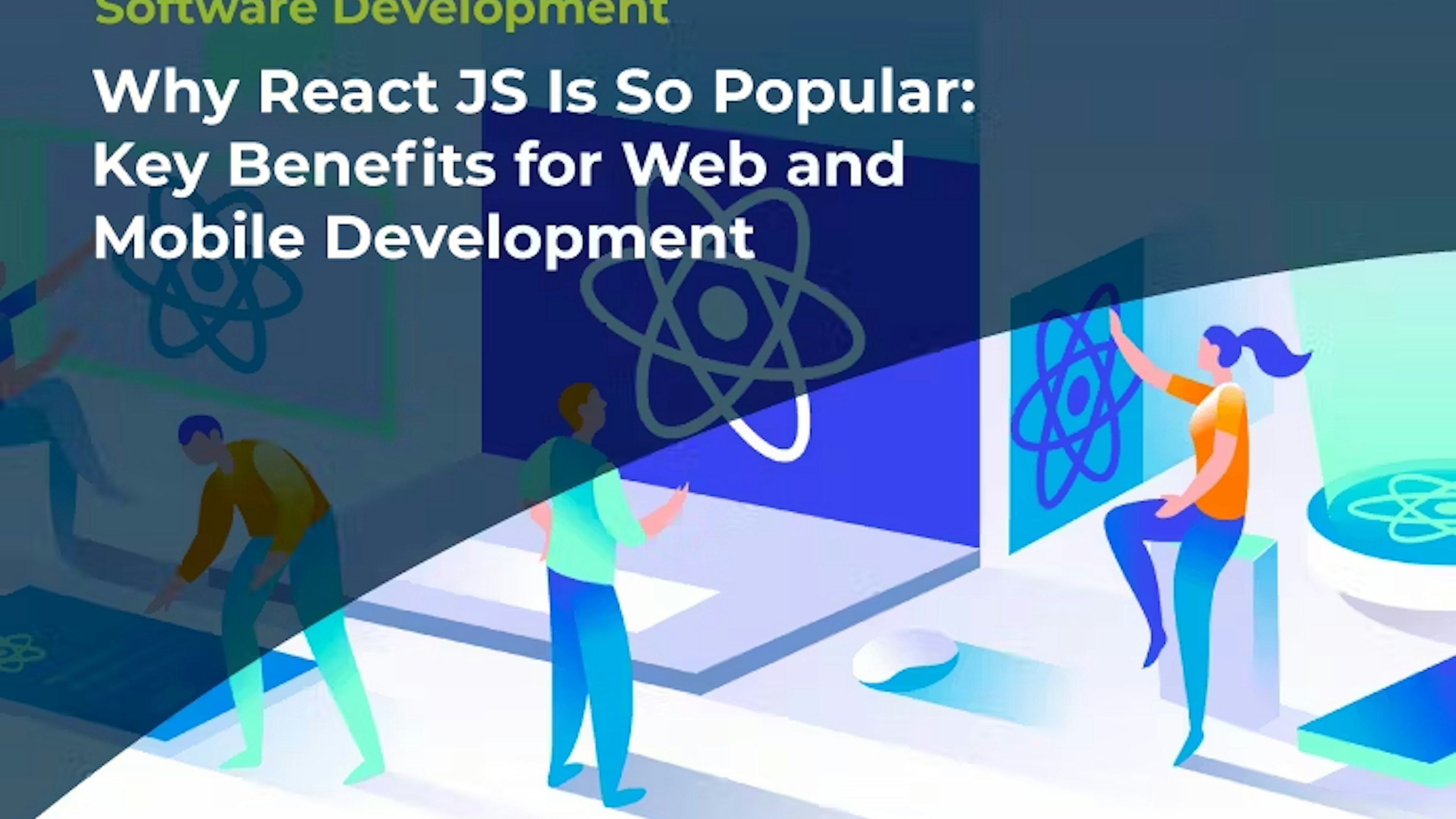Unlocking Fiserv Premier Part 1: Architecting for Agility and Innovation


Introduction: Navigating the Evolving Financial Landscape
The financial services industry is changing rapidly. Customer expectations are evolving, technology is advancing quickly, and agile fintech companies are emerging. This transformation is accelerated by the global move towards Open Finance principles.
As a technology leader, you likely see Fiserv Premier as a key asset. The challenge is to use its capabilities fully to succeed in this changing environment.
This digital transformation is not just about keeping up—it's about getting ahead of the competition.
Here at Devsu, we have extensive experience helping financial institutions with this transformation. We understand the Premier platform and the fintech ecosystem and we can help you navigate this exciting new landscape.
This guide is a roadmap for leaders starting digital transformation. It focuses on Phase 1: Architecting for Agility and Innovation. This first phase is about:
- Modernizing your core architecture.
- Adopting an API-centric approach for Open Finance.
- Using your data to its full potential.
We will explore advanced strategies with real examples and expert insights.
In this guide, you will learn about:
- Innovative API Modernization: How to align with Open Finance standards and make Premier a platform for innovation and collaboration.
- Cutting-Edge Data Strategies: How to use data for insights, better customer experiences, data privacy, and regulatory compliance.
- Practical Cloud Migration Framework: A step-by-step plan to improve scalability, agility, and resilience by moving to the cloud.
- Detailed Implementation Plan: A structured plan using proven project management methods for successful execution.
- Peer Institution Case Studies: Real examples of challenges and benefits from institutions like yours undergoing modernization.
Enjoy reading!
1. Embracing an API-Centric Mindset: Transforming Premier into a Platform for Innovation and Open Finance Participation
Challenge: Older core banking systems like Premier were designed as large, complex applications with limited integration capabilities. This "black box" approach made it hard to be agile, participate in the fintech world, and use Open Finance opportunities.
Strategic Approach: To overcome these limits, we need to shift to an API-centric architecture. This means more than just adding APIs. It means fundamentally redesigning for agility and external collaboration.
1.1 API-First Architecture: Beyond Functionality, Embracing Open Finance Standards
Concept: Instead of making Premier features available through APIs, we need an API-first mindset. APIs become the basic building blocks of your digital strategy. API design must align with business goals, developer needs, and Open Finance rules. Examples of these rules include:
- Revised Payment Services Directive (PSD2) in Europe (European Banking Authority, 2015).
- Open Banking standards in the UK from the Open Banking Implementation Entity (OBIE).
- FDX API in North America (Financial Data Exchange, 2023).
APIs should be treated like products. Focus on making them easy for developers to use (developer experience or DX).
Implementation:
(Months 1-3) Step 1. Define API Strategy and Business Alignment:
- Create an API strategy that supports your business goals and Open Finance objectives.
- Identify core Premier capabilities that can become APIs. Think about how APIs can:
- Improve customer experiences.
- Simplify internal processes.
- Create new revenue through Open Finance.
- Enhance regulatory compliance.
Examples of Potential APIs:
- Payment Initiation API (PISP): Let third-party providers (TPPs) start payments for customers, following PSD2 rules.
- Account Information API (AISP): Give secure access to customer account data for TPPs. This allows them to offer new financial tools, while following data privacy rules like GDPR (European Parliament and Council, 2016) and CCPA (California Legislative Information, 2018).
- Customer Insights API: Provide secure access to customer data and analysis for partners or internal apps. This enables personalized offers and targeted marketing while protecting data privacy.
- Real-Time Fraud Detection API: Offer an API that uses Premier's transaction data and AI to detect real-time fraud.
- Account Origination API: Enable fintech partners or internal teams to create new account opening experiences using Premier's core features through a modern, secure API.
(Months 1-3) Step 2. Design Target API Architecture:
- Set clear API design principles.
- Choose the right API styles (e.g., REST, GraphQL, gRPC) for different needs.
- Create standards for API versioning and documentation.
- Follow Open Finance specifications (e.g., OpenAPI, OAuth 2.0, ISO 20022).
- Think of "API as a Product." Make developer experience (DX) a priority. Use modern API design tools.
1.2 Beyond exchange: Building a Hybrid Integration Strategy for a Connected Ecosystem
Concept: jXchange is an essential integration tool. However, for a modern, agile, open finance system, we need a hybrid approach. This means using jXchange with other advanced integration technologies. This gives more flexibility, scalability, and wider connectivity.
Implementation:
(Months 1-3) Step 1. Evaluate jXchange Limitations:
- Assess what jXchange cannot do for modern API management and Open Finance.
- Identify areas where jXchange is limited, such as:
- Advanced API management features.
- Support for new protocols (e.g., gRPC, GraphQL).
- Developer experience improvements.
- Compliance with Open Finance standards.
(Months 3-9) Step 2. Implement Modern API Gateway Alongside jXchange:
- To work with jXchange, add a modern API gateway (e.g., Apigee, Kong, MuleSoft Anypoint Platform).
- Use the API gateway to manage external API traffic, security, and developer interaction. This is especially important for APIs used by external developers in Open Finance.
- Keep using jXchange for internal integrations or for connecting to older Premier parts that don't have direct API access.
(Months 3-9) Step 3. Consider ESB or iPaaS for Complex Integrations:
- If you have complex integrations with many older systems, consider an Enterprise Service Bus (ESB) or an Integration Platform as a Service (iPaaS).
- ESBs or iPaaS can manage message routing, data changes, and coordination in complex setups, including hybrid cloud environments.
- Explore Hybrid Integration Platforms (HIP) for best practices in connecting cloud and on-premise applications. Integration technologies are constantly evolving.
Trends:
- Service Mesh: Service meshes like Istio and Linkerd are essential for managing communication in complex microservices systems.If your microservices system is complex, consider a service mesh. It can manage service-to-service communication, traffic routing, and security.
- Integration Platform as a Service (iPaaS): Cloud-based integration platforms are becoming popular for easily connecting cloud and on-premise applications. vUse iPaaS solutions to connect Fiserv Premier with cloud applications and services. Automate workflows and simplify business processes.
1.3 Fostering an API Ecosystem: Thinking Beyond Internal Consumption, Embracing Open Finance Partnerships
Concept: Don't just think of APIs for internal use. See them as products for external partners, fintech companies, and developers. This can create new value, expand your reach, and enable Open Finance partnerships.
Implementation:
(Months 3-9) Step 1. Design APIs for External Developers:
- Design APIs with external developers in mind.
- Make APIs well-documented and easy to use. Follow industry best practices and Open Finance standards.
- Offer different levels of API access (e.g., free, freemium, paid) based on usage and features.
(Months 3-9) Step 2. Establish a Developer Portal:
- Create a developer portal to support external developers.
- Provide:
- Clear documentation.
- Software Development Kits (SDKs).
- Code examples.
- A testing environment (sandbox).
- Forums for community support.
- Showcase successful API uses and explain partnership and revenue sharing clearly.
(Months 6-9) Step 3. Engage with Fintech Community and Explore Open Finance Partnerships:
- Participate in industry events, hackathons, and online forums to promote your APIs and find fintech partners.
- Explore different API monetization models like subscriptions, transaction fees, or revenue sharing.
- Study successful API programs in finance from companies like Stripe, Plaid, or BBVA. Adapt their best practices.
- Recognize that modern APIs are key to working with fintechs and tech giants like Stripe, Square, or Apple Pay in payments and financial solutions.
(Months 6-9) Step 4. Monitor and Measure API Adoption and Impact:
- Track key metrics to see how APIs are being used and their impact.
- Monitor:
- API usage patterns.
- Developer satisfaction.
- A number of new products are built using your APIs.
- Use this data to improve your API strategy developer experience and show the value of Open Finance efforts.
Trends:
- API Marketplaces: API marketplaces are becoming central places to find, publish, and use APIs. Consider listing your APIs on public or private marketplaces to reach more developers.
2. Data-Driven Transformation: Unlocking the Value of Premier's Data for Insights, Personalization, and Compliance
Challenge: Traditional data warehouses can struggle with the large amounts of data in modern systems. We need a more contemporary and flexible data approach to use Premier's data fully.
Strategic Approach: Move beyond old data warehouses to modern data architectures. This will allow for easier data access, real-time insights, and advanced analytics, with strong security and governance.
2.1 Building a Modern Data Architecture: Beyond the Data Warehouse, Embracing Data Democratization
Concept: Build a more flexible and scalable data architecture. Think about data lakes, data meshes, or data lakehouses. The goal is to make data accessible to more people while keeping it secure and well-managed.
Implementation:
(Months 1-3) Step 1. Design Data Architecture (Data Lake, Mesh, or Lakehouse):
- Design a data architecture that fits your needs. Choose from:
- Data Lake: A central place for raw data in its original form. Good for exploration and central data teams.
- Data Mesh: A decentralized approach where different teams manage their own data. Good for organizations with distributed data ownership.
- Data Lakehouse: Combines data lake flexibility with data warehouse management. Supports both data science and business intelligence on one platform.
(Months 3-9) Step 2. Choose Storage Technologies:
- Cloud-based storage (e.g., AWS S3, Azure Data Lake Storage, Google Cloud Storage) should be used for scalability and cost-effectiveness.
- Open-source tools like Apache Hadoop or Apache Spark can be considered for processing large datasets.
(Months 3-9) Step 3. Implement Data Ingestion Mechanisms:
- Set up processes and tools to bring data from Premier and other sources into your data lake or mesh.
- Use:
- Batch ETL tools like Informatica or Talend for regular data transfers.
- Real-time streaming tools like Apache Kafka or AWS Kinesis for immediate data flow.
(Months 3-9) Step 4. Develop and Enforce Data Governance Policies:
- Create and enforce data governance policies. This includes:
- Data quality standards.
- Access controls.
- Data retention rules.
- Data lineage tracking (where data comes from and how it changes).
- Data cataloging tools like AWS Glue Data Catalog, Azure Data Catalog, or Collibra can be used to manage metadata.
- Consider "data virtualization" to access data from different sources without moving it physically.
(Months 6-9) Step 5. Train Users on Data Analysis Tools:
- Give business users and data analysts self-service analytics tools (e.g., Tableau, Power BI, Qlik Sense).
- Train them on data basics so they can explore data and create reports themselves.
Trends:
- Data Fabric: Data Fabric is becoming a key approach for managing data across different systems (DAMA International, 2024). Implement a data fabric architecture to connect and manage data across your organization, including Premier. Use data virtualization and catalogs to create a unified data view.
- Data Mesh: Data Mesh is gaining popularity as a decentralized data approach (Preston-Werner, 2023). Implement a data mesh by giving data ownership to different teams and creating self-service data products. Use data governance to ensure data quality and consistency.
2.2 Real-Time Data Streaming: Enabling Actionable Insights, Personalized Experiences, and Enhanced Fraud Detection
Concept: Use real-time data streaming to capture and process Premier data as it's generated. This allows for immediate responses, personalized customer service, and better fraud detection.
Implementation:
(Months 3-9) Step 1. Identify High-Value Use Cases for Real-Time Data:
- Focus on areas where real-time insights are most valuable:
- Personalized offers based on immediate customer actions.
- Real-time fraud detection to stop fraud instantly.
- Real-time monitoring of systems to fix issues quickly.
(Months 3-9) Step 2. Implement Real-Time Data Streaming Platform:
- Use a real-time data streaming platform (e.g., Apache Kafka, AWS Kinesis, Azure Stream Analytics).
- Capture and analyze real-time data from Premier and other sources.
(Months 6-9) Step 3. Develop Real-Time Analytics Dashboards and Alerts:
- Create dashboards showing key metrics from real-time data.
- Set up alerts to notify teams about important events or problems.
- Explore Customer Data Platforms (CDPs) to combine customer data from all sources, including real-time streams, for a complete customer view.
Trends:
- Streaming Analytics: Real-time analysis of streaming data is increasingly important for financial institutions. Use streaming analytics platforms (e.g., Apache Flink, Apache Spark Streaming, AWS Kinesis Data Analytics) to process data from Premier and other sources. Create real-time dashboards and alerts.
- Change Data Capture (CDC): CDC is a technique for capturing database changes in real time.CDC will capture changes in Premier's database and send them to other systems immediately. It will also be used for real-time data updates and event-driven systems.
2.3 Advanced Analytics and Machine Learning: Predictive Insights, Automation, and Enhanced Decision-Making
Concept: Use machine learning and advanced analytics to find hidden patterns in data, predict future behavior, automate decisions, and personalize customer experiences.
Implementation:
(Months 6-9) Step 1. Develop and Deploy Machine Learning Models:
- Build machine learning models for:
- Predicting customer churn, cross-selling opportunities, or loan defaults.
- Improving fraud detection accuracy.
- Automating tasks like loan application processing or risk assessment.
(Months 3-9) Step 2. Choose Machine Learning Tools and Platforms:
- Use cloud-based ML services (e.g., AWS SageMaker, Azure Machine Learning, Google Cloud AI Platform) or open-source tools like TensorFlow or PyTorch.
- Consider automated machine learning (AutoML) tools to speed up model development.
(Months 3-9) Step 3. Establish Data Science Team and Expertise:
- Build a data science team or train existing staff.
- Ensure you have expertise in developing, deploying, and managing machine learning models.
- Explore "explainable AI" (XAI) to make AI models more transparent and understandable. This is important for trust and regulatory compliance in finance.
Trends:
- AutoML: Automated machine learning (AutoML) platforms are making it easier to build and use machine learning, even without deep expertise. Explore AutoML platforms to speed up the development of models for fraud detection, risk scoring, and other uses.
- Explainable AI (XAI): XAI is becoming more important for building trust and transparency in AI systems. Use XAI to explain how AI models make predictions and decisions. Ensure AI used in core banking is transparent and auditable.
3. Initiating Cloud Migration: Setting the Stage for Scalability, Agility, and Resilience
Challenge: Traditional on-premise Premier setups can limit scalability, agility, and increase costs. Moving to the cloud can solve these issues. But it requires careful planning, a phased approach, and attention to security and compliance. This section covers the initial steps to prepare for cloud migration.
Strategic Approach: Start with a "cloud-first" mindset, even before fully moving Premier. This prepares your organization for the cloud, builds cloud skills, and allows you to see cloud benefits sooner. A hybrid cloud strategy is often best for finance, balancing flexibility, control, and regulations.
3.1 Cloud-First Mindset: Embracing Cloud-Native Architectures for Future-Proofing Infrastructure
Concept: Start thinking "cloud-first" now. Prioritize cloud-native technologies and architectures. This prepares you for the cloud and lets you gain cloud experience early.
Implementation:
(Months 1-3) Step 1. Design for Cloud-Native Architectures:
- When creating new apps or updating existing ones that work with Premier, use cloud-native design. This means:
- Microservices.
- Containers.
- Serverless computing.
- This will make it easier to move apps to the cloud later and build cloud skills.
(Months 3-9) Step 2. Leverage Cloud-Native Services for New Projects:
- Start using cloud services from providers like AWS, Azure, or Google Cloud for new projects and to improve Premier.
- Examples include:
- Cloud databases.
- Messaging services.
- Serverless functions.
- Use these to build new features or connect to external systems.
(Months 6-9) Step 3. Adopt DevOps Culture and Implement CI/CD Pipelines:
- Start using DevOps practices to automate app deployment, testing, and monitoring in the cloud.
- Use tools like Jenkins, GitLab CI/CD, or Azure DevOps for automated pipelines.
- This speeds up development, improves teamwork, and allows for faster updates to cloud solutions.
- Explore "cloud-native banking platforms" from fintechs or cloud providers as possible replacements for your core banking system in the future.
Trends:
- Serverless Computing: Serverless computing is becoming popular for building apps without managing servers. Explore serverless for specific tasks that work with Premier. Use serverless functions for API requests, data processing, or workflows.
- Cloud-Native Databases: Cloud-native databases (e.g., Amazon Aurora, Azure Cosmos DB, Google Spanner) are designed for cloud scalability and reliability. Consider cloud databases as replacements for traditional databases for certain applications that interact with Premier.
3.2 Hybrid Cloud Strategy: Balancing Flexibility, Control, Security, and Compliance
Concept: Use a hybrid cloud strategy. Combine on-premise Premier with public and/or private clouds. This balances cost, performance, security, and compliance. It also allows you to learn about the cloud and gradually move workloads. This is especially relevant for financial firms with strict data and security rules.
Implementation:
(Months 1-3) Step 1. Identify Workloads for Different Environments:
- Analyze your Premier workloads to decide where they should run: on-premise, private cloud, or public cloud.
- Consider:
- Data sensitivity.
- Performance needs.
- Regulations.
- Costs.
- Example: Keep sensitive data on-premise or in a private cloud. Use the public cloud for less sensitive tasks or for testing.
(Months 3-9) Step 2. Implement Hybrid Cloud Management Platform:
- Evaluate hybrid cloud management tools (e.g., AWS Outposts, Azure Stack, Google Anthos).
- These tools let you run cloud services in your own data center or private cloud. They provide consistent management across environments.
(Months 3-9) Step 3. Establish Secure Connectivity Between Environments:
- Set up secure and reliable connections between your on-premise and cloud environments.
- Use secure VPNs or dedicated connections (e.g., AWS Direct Connect, Azure ExpressRoute) for fast and secure links.
- Consider "multi-cloud" strategies to avoid being locked into one vendor and use the best services from different providers.
Trends:
- FinOps: FinOps (Financial Operations) is a new area focused on managing and optimizing cloud spending. Use FinOps to monitor and optimize your cloud costs. Use tools like AWS Cost Explorer, Azure Cost Management, or Google Cloud Billing to track cloud expenses.
- Trend: Multi-Cloud: More organizations are using multi-cloud strategies to avoid vendor lock-in and improve resilience. Consider the benefits of multi-cloud for your organization. Plan to deploy and manage apps across multiple clouds.
3.3 Containerization and Microservices: Enabling Portability, Scalability, and Modernization
Concept: Explore containers and microservices. They are key to cloud-native architectures and app modernization. Containerizing Premier parts makes them portable, scalable, and easier to manage in the cloud. Breaking down large modules into microservices improves agility and resilience.
Implementation:
(Months 1-3) Step 1. Assess the Feasibility of Containerizing Premier Components:
- Analyze Premier's architecture to see which parts can be containerized.
- Think about any code changes needed for containerization.
(Months 3-9) Step 2. Pilot Containerization with Non-Critical Workloads:
- Start by containerizing less important apps or components that interact with Premier.
- Use container tools like Docker and Kubernetes to build, deploy, and manage containers.
- Gain experience with containers before moving to critical workloads.
(Months 6-9) Step 3. Gradually Decompose Monolithic Modules into Microservices:
- Identify logical areas within Premier modules and start breaking them into smaller microservices. Do this step-by-step.
- Start with less critical or frequently changed parts.
- Design each microservice to be independently deployable and scalable.
(Months 6-9) Step 4. Implement Service Mesh:
- Consider a service mesh (e.g., Istio or Linkerd) to manage communication and security between microservices.
- Service meshes simplify microservices management and provide features like traffic management and security.
Trends:
- GitOps: GitOps is a method for managing infrastructure using Git as the main source of truth. Use GitOps for managing your containerized apps and infrastructure. Use Git to store infrastructure configurations and automate deployments.
- Kubernetes Operators: Kubernetes Operators are a way to manage complex apps on Kubernetes. Develop Kubernetes Operators to automate the deployment and management of Premier components on Kubernetes.
Conclusion: Laying the Foundation for a Future-Ready Financial Institution
Phase 1 of this roadmap is about building a strong foundation for a future-ready financial institution. By using APIs and Open Finance principles, unlocking data value, and starting cloud migration, you will be well-positioned to:
- Improve customer experiences.
- Increase efficiency.
- Create new revenue.
- Foster innovation.
Modern technology in Phase 1 leads to better customer experience and internal efficiency. Addressing customer experience and omnichannel needs is a global challenge that is improved by agile systems. Modernization also simplifies internal processes, leading to better teamwork, faster responses, and a more efficient workforce. These improvements are essential for staying competitive in finance.
The strategies, examples, expert references, and implementation steps in this guide are a starting point for technology leaders ready to advance their Fiserv Premier environment. Remember, this is just the beginning. Continuous learning, adaptation, and collaboration with Fiserv, partners, and fintech innovators are key for long-term success in the digital landscape.
Stay tuned for future parts of this guide. We will cover topics like advanced cloud migration, DevOps, innovation culture, and Open Finance regulations. This will provide a complete path forward for your digital transformation.
Subscribe to our newsletter
Stay informed with the latest insights and trends in the industry
Content
You may also like


